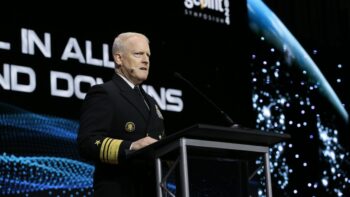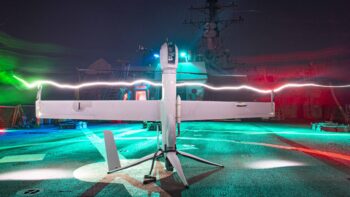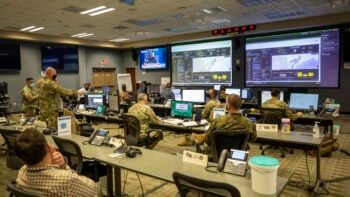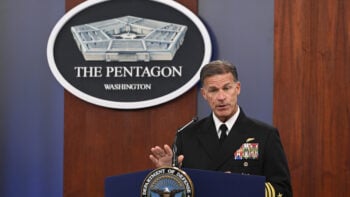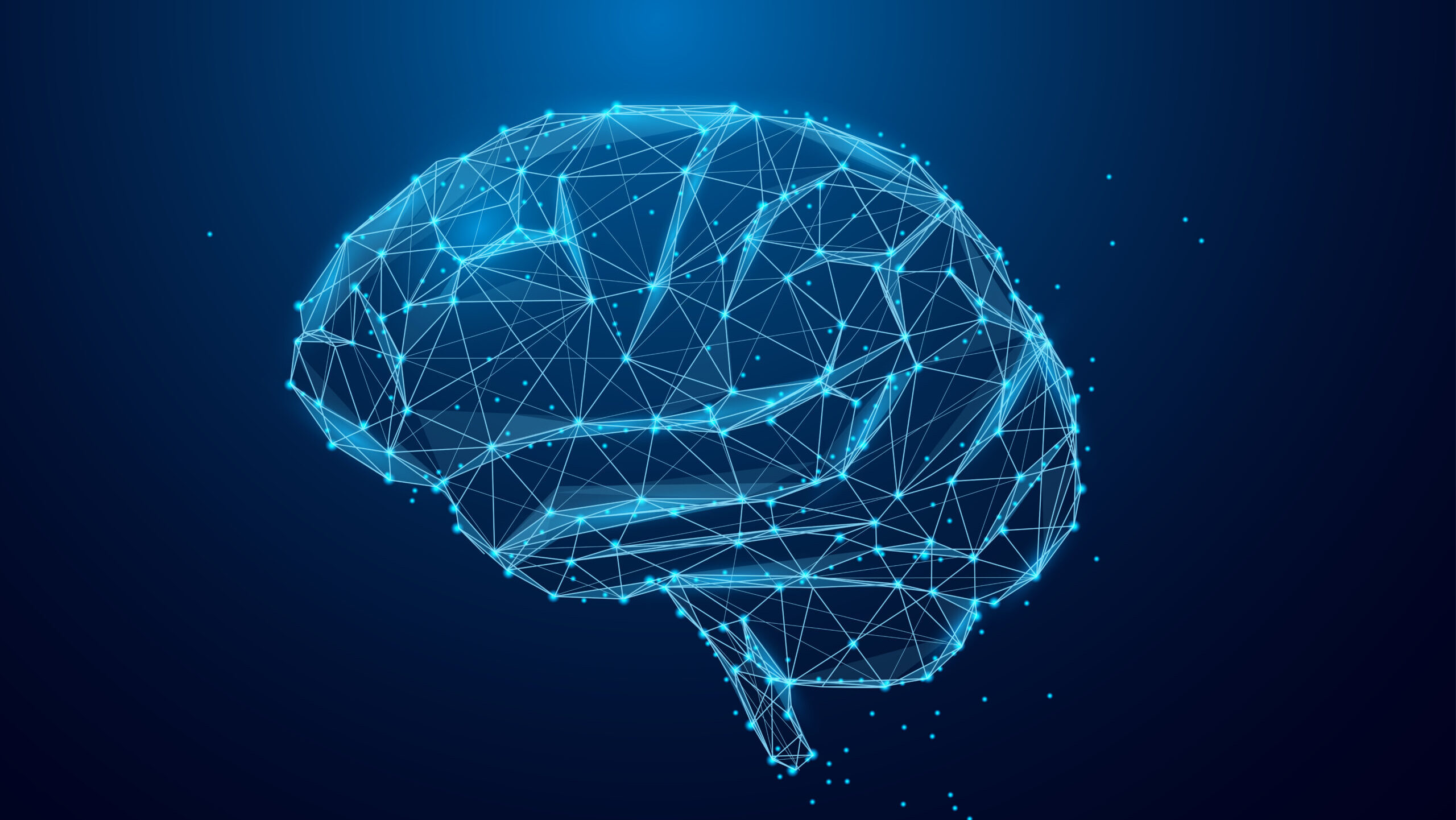
Low poly brain or Artificial intelligence concept. Symbol of Wisdom point. Abstract vector image of a human Brine. Low Polygonal wireframe blue illustration on dark background. Lines and dots. (Getty images)
WASHINGTON — Project Maven, the Pentagon’s flagship effort to speed up the use of artificial intelligence across the military, is officially a program of record at the National Geospatial-Intelligence Agency (NGA), and now it’s looking at how large language models and data labeling can further its progress.
The AI effort, which was established in 2017, became a program of record Nov. 7, Rachel Martin, Maven director, said today at the NGA Industry Summit. Parts of Maven were split between the NGA and the Chief Digital and AI Office last year, with the NGA taking operational control of its GEOINT AI services.
“I think the best way to describe us is we’re just now starting to get our feet under us to be able to look towards the future,” Martin said. “As we look at those goals that we had, I think we can say that we’ve successfully mapped them, we’re pretty comfortable [where] we’re at. We’ve hit our milestones and you’ll start seeing as we look to the next few months a lot more activity from the Maven office in terms of contracting.”
NGA is “in the process” of releasing a request for proposals for data labeling for Maven, which is expected to be released in the second quarter of the next year, she added. While that effort will be core to supporting Maven, it’s meant to extend beyond the scope of the program and more broadly across the agency. The agency is also looking to experiment with generative AI and large language models.
“I think we’re more interested, in the long term, in the text-to-image, the combined large language and large vision [models] that are really going to give us an opportunity to do things like query images and get text results back,” Martin added.
The NGA has already been working on expanding the use of “computer vision” — algorithms to rapidly sort through images to detect targets and create a realistic operational picture — for Maven. Earlier this year, NGA Director Vice Adm. Frank Whitworth said the agency had already made “significant advances” when it comes to Maven, working with the “combatant commands to integrate AI into workflows, accelerating operations and speed-to-decision.”
Martin said today that over the next year, the “big contracts” coming out are going to be focused on “transitioning our core capabilities.”
“So things like our data labeling capability, our AI infrastructure … where we’re looking to do experimentation and prototyping will be in some of these areas just to get a sense of how do we best integrate and use and operationalize some of these technologies because they are not without challenges in their current maturity,” she said.
NGA director pushes back at criticisms of agency, touts ‘wetware,’ tradecraft (EXCLUSIVE)
In an exclusive sit down with Breaking Defense, Vice Adm. Frank Whitworth defended his agency’s role in moving commercial and government satellite data to the field in a timely manner.

















